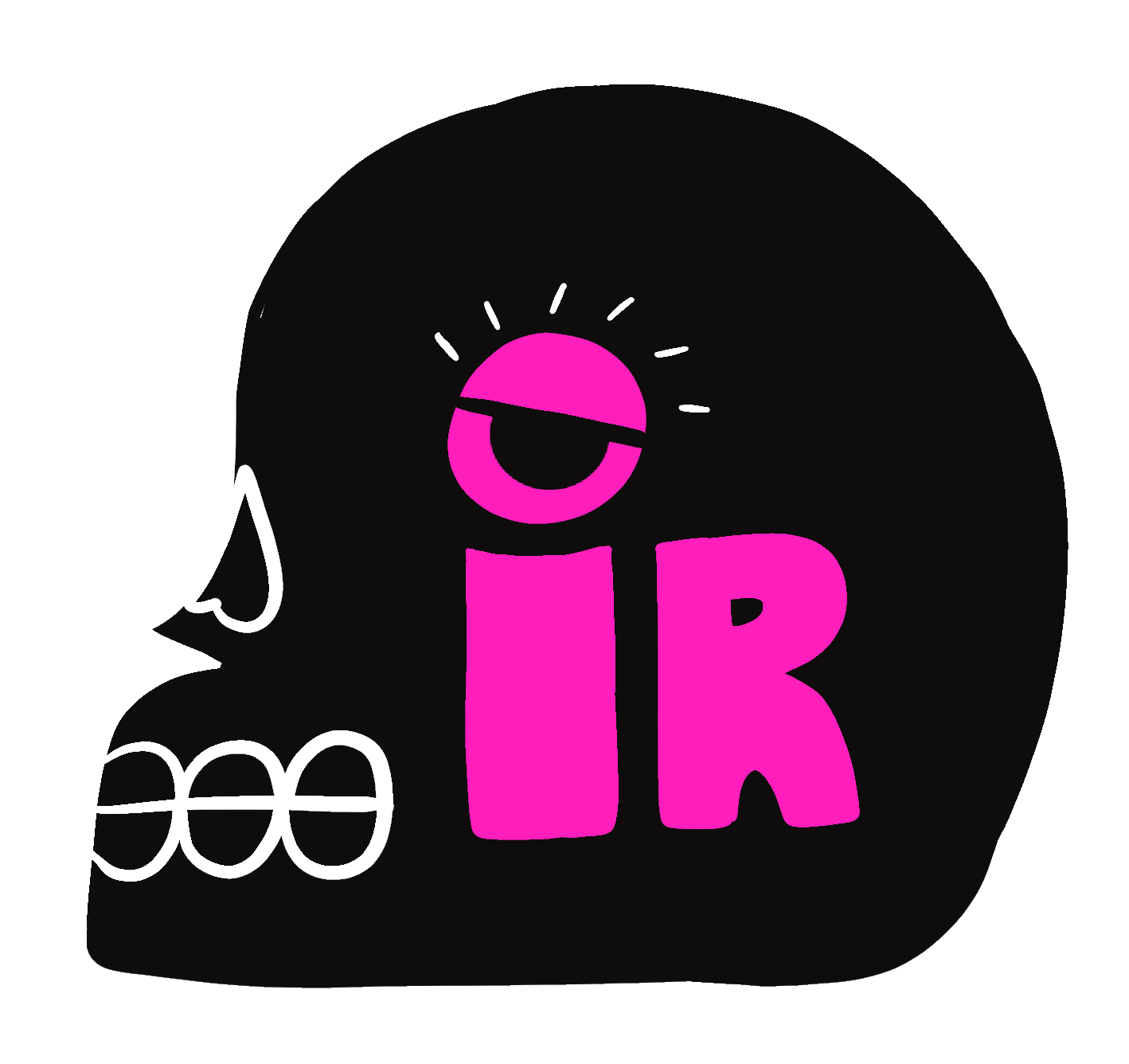I noticed the woman earlier, when I was further back in line. She was pacing around the parking lot with her phone at her face, loudly explaining to her Instagram followers that the last remaining Pig Stand diner in Texas, over 100 years old, was closing that day forever. I had been waiting for about 40 minutes before she asked if she could join me, since I was “all alone.” She explained that her 93-year-old father, out of view, couldn’t wait much longer. We’d eat together and they’d buy my breakfast. After receiving the necessary confirmation, she nodded to her husband who stood watch over their van. A short Chinese man with white hair crept out wearing a Kn95 and began inching toward us. It was an early morning. I was vaguely hungover. The four of us would soon be seated family-style, within a cramped pink booth.
The line snaking around the diner was extensive. I’ve since tried to uncover why any of us were there. At the time, I registered an internal desire for watery coffee and hot biscuits and gravy. It was a comfort meal from the recent past, one I enjoyed while working out of a local newsroom after college. Often, to keep my numbers up, I pitched stories about decades-old businesses having big anniversaries, or closures – which were increasingly common post-covid. I became drawn to keeping a record of these things. I liked when people showed me pictures of unassuming nachos in their camera rolls and talked about the 1980s. I encouraged them when they told me about old waitresses they had crushes on and of friends who had died. I believed I was developing a civic mythology of importance, even if it was mostly internal. Plus, my hangover meals were getting comped. On the last day of the Pig Stand, it had been months since my last day at the paper. But my affection hadn’t abated.
An older black man with black crocs and a diamond earring was the only person between us and the door. He was revealing his wingspan, reading a print newspaper. I’d seen him there before, wearing the same notable hat. I suspected he was a regular, a man seeing a long-tread routine to its bitter end. The sun-spotted white couple behind us loudly recounted the New Order concert they attended the night before, carving out their own public theater.
“We loved it…our third time seeing them.” Every opinion they shared in unison. The diner visit was just another thing to do together.
“Oh nice,” said a bystander.
Earlier, a pretty Mexican teen with a long ponytail walked up with two girlish older ladies, clearly relatives. She was wearing a birthday sash. I thought you probably wouldn’t get out of bed early on your birthday, if not for the love of whatever this feeling is, or maybe at that age, the insistent love of a mother, or some combination of the two.
I’m not sure what the feeling is exactly, but I know that I am someone who pursues it. Part citizen anthropologist, I enjoy seeing who else shows up to these things and how they behave – but I suspect it extends beyond that. Maybe participating in the last day of an empire like this can act as a closure simulator for the anxious or sentimental – comorbidities I possess – whenever the course of life feels out of control. It becomes a cope. A way to understand your life in terms of epochs, with a beginning and an end. Other closure simulators include: the last day of highschool; the post-break-up coffee; receiving your last rites as a Catholic.
With the diner walls closing in, patrons might seek to confess, or come to some sort of understanding, while eating their eggs just how they always liked them. Things come to a cathartic boil. Like me, I think others must also register a bit of their own imminent annihilation in this type of aching Americana. I was supposed to meet up with my friend Faith later that morning, but first felt the need to subject myself to this experience.
Inside, the ceiling was stained, there was a checkered floor, and the room was full of soft people and colors. The husband and the old man were flanking the ends of the booth, while us ladies were tucked in near the personal jukebox. We all debated the ingredients of “the brown cow,” an ice cream concoction the husband used to order when he went there with his dad in the 70s. He ordered pink milkshakes with whipped cream and cherries for himself and his father-in-law. They sucked them through plastic straws. The old man remained quiet. His daughter chatted about a movie she had recently seen on Hulu, “The Hating Game.” The Pig Stand was crowded with kitsch; piggy banks and faded posters, salt and pepper shakers, a cavalcade of hog figurines of all shades and materials. The windows were frosted with pink and green paint, advertising yesterday’s lunch specials. There was a filter of settled dust.
I noted the picture of a local Elvis impersonator photoshopped onto the menu. He had once warned me that he performed there. I looked around the crowd for his face, but instead, met a yellowing Elvis cut-out pasted to the wall. The specter of Elvis is most alive in places like this. The glory, the tragedy, the lingering optimism. When the doors finally close, Elvis’ life-force weakens. The woman’s parking lot “influencing practice” was explained when she revealed that she habitually creates reels of her 93-year-old-father, an immigrant who doesn’t speak any English, eating at “local institutions” for the first time.
“He’s a local celebrity!” she exclaimed when the dejected diner owner passed our table.
“Oh, is he? No kidding…I didn’t know….”
The woman searched for more of a reaction, but the owner was preoccupied with making her rounds. She must have been nearly 70. I thought her feet must have ached because they were always at work. And her back, because her breasts were large. I thought of my own budding bunions, and doubted my stamina as a woman. The owner only paused for a second to issue her reply, before continuing, casually lamenting her medical bills. I think her issue was something vascular.
I overheard a waitress list off all the things they were out of already – chocolate ice cream, fried shrimp, fried catfish. Vitality was wavering. The old man seated was somewhere else, lost in thought, seemingly indifferent to his celebrity. His daughter snapped photos. I tried to read his eyes.
“I just don’t have the energy I used to,” the diner owner continued to talk to us, mostly to herself. “Plus, look at us. We’re just being swallowed up by these new highrises.”
–
They were hoping I had a boyfriend, so we could chat about it. I didn’t want to tell them anything complicated, so I asked the family questions about themselves. Classic ones like: how did you meet? Do you have kids? I don’t remember the answer to the first.
People at the diner were looking around, wondering if the place ever perfected itself. Wondering if this is what it would be like at the end of their own lives. With the shelves soon to clear – there’s the assessment of how things used to be, the rushed importance of meaning.
It reminds me of a film I watched last year. Eagle Pennell’s Last Night At The Alamo. A place reluctant regulars would “never forget.” You watch the movie in a breathless sort of way, as if this Houston dive bar’s last night is an annular eclipse – an event rarely seen and impossible to replicate, implying the divine. The spirit of the place stirs, seeps out of the vinyl, as if summoned. It begins crossing over. On the last day at the Pig Stand, I wanted to see it through.
When the food finally arrived, we were grateful for a distraction from our strained conversation. Still, it felt nice, like I was working again. The true end of the era. After a while, we rummaged for quarters and pushed them into the jukebox’s metal slot.
“Have you seen any concerts recently?”
“ Yes. We saw Sir Elton John at the uh… at the Alamodome.”
“Oh! He was fantastic.”
“That’s great. He’s a classic…”
They both agreed.
“Apparently, he lives in Atlanta now…”
Of course, she wanted to hear the song “Blue Suede Shoes.”
When I got up to go to the bathroom, an older woman reached for my arm.
“Your family is really beautiful honey.”
“Thank you.”
We both smiled.
–
There used to be 130 Pig Stands. Littered around the country, mostly across Texas. The first one opened in Dallas in 1921. The last one stood on Broadway, in San Antonio. I guess ultimately this is a eulogy.
I’ve seen them casually referenced in the writing of people like Larry McMurtry and Rick Bass. I’ve been there only a handful of times myself. Crucial parts are always missing the day a place dies old. I’ve noticed this, through my lame and desperate hobby. It lacks the right sugar packets, the special waitresses who knew all the best stories. Still, if it’s a place that people ever loved, you can sense it – the former greatness. Maybe its closure will open space for something else that’s special and new.
The Pig Stand spawned the country’s first drive-in. It invented onion rings and Texas toast and the chicken fried steak sandwich. It’s freeing to believe these things written on the back of menus. Who knows. You can tell certain lies in fast-food America if they feel true.
The family and I took a picture together at the Pig Stand, all four of us, from an elevated selfie angle. It would later appear on her foodie Instagram. The caption would read:
“Dad enjoyed his time at the historic Pig Stand!”
Or something close. We exchanged numbers, then said our goodbyes. I went home and awaited my friend’s arrival.
–
There was construction happening on the chalky stretch of highway. Hardly any grass in the median. We were on 281 North, on our way to visit a retired professor, whom we were helping with a project. We were surrounded by F150’s and SUVs headed to the lake.
It happened fast. I was on my phone when we ping-ponged off the road. The car was totaled. I had my Pig Stand leftovers with me when it happened. It was only an hour later. They flew across the backseat before our stop. The interior of Faith’s white Ford Fiesta was painted in books and gravy and other prepared foods.
It could’ve been really bad. We could’ve died with the 100-year-old franchise. I wonder if that’s what was supposed to happen, if my Pig Stand experience was actually a strategically placed simulation for the real thing. I know a guy with oil money in an Escalade wasn’t paying attention, and we were lucky. Now I get anxious in cars. When I have too much free time, I neurotically worry that I’ve become nostalgically attached to my fear, turning to it like it’s another local diner to pan for answers in. I’ve tried to wrangle the instinct. There have been signs of improvement.
–
When the woman texted me the photo of my adopted family that night, I was in bed, convalescing. I thought of the old man again, becoming his daughter’s passtime at the end of his life. I picture him in the diner – the last of its breed – being all swallowed up. His endurance and frailty. The things I might be imposing on him, and her. I’ve always paid attention to old men because they remind me of my grandpa, who recently passed. We would get our onion rings and ice cream together at the Dairy Queen. I said goodbye to him while he was laying on the hospital bed, looking like a hollowed out version of himself. The nurses set it up in his living room, facing the windows. That was nice. I’ll always remember that he could watch the deer. He died in the same place where he used to tell the stories about the creatures that lived behind his house, in the oak and cedar woods.
–
A few weeks after the accident, I went to the official Pig Stand auction alone. They had to rehome all the hogs. Faith and I often joke about “the accident” like it single-handedly scrambled the trajectory of god’s will— but as an event it was undeniably destabilizing. Something was different.
The diner’s windows were already boarded up. The place was all shell. I recognized a few faces, but the asian family wasn’t there. I stood in the parking lot with Pig Stand patrons who wore flip-flops, sunglasses, and jeans. One betting woman wore a t-shirt with a sassy Tweety Bird cartoon across the chest. We collectively searched the fleet of numbered hogs. I coveted a blue-hued poster that read “it ain’t easy to be on top,” with piglets stacked on top of each other, but a determined older woman with a nervous temperament bid an impossible sum, something like $85.
The Pig Stand auctioneer stood on a truck bed with a PA. He was good at speaking fast. He spoke with feeling, like a minister. I think he was the owner’s son. There were statues and salt and pepper shakers and framed news clippings and old photographs. Every object In Memoriam. There’s a closet full of my grandpa’s clothes I still have to look through. Collections always have to disperse.
I noted a ceramic white hog, painted with disquieting eyes. You see them at flea markets. A friend once told me they were evil. I wasn’t sure about that, but I could sense its power. Did the ceramic pig know then of the devastating affair I’d enter, months later? Could it predict the day it began? That day I would fall apart in the passenger seat of his truck. I’d become a cracked open geode, terrified of the road ahead. The thing would slip away, and then I’d view things differently. Months would pass, I’d eventually be fine.
Finally, I won a bid. It was cheap, but I still paid too much. Three pigs all stacked on top of each other, just like the poster, but worse. The spots were all colored in with faded sharpie, probably by a well-meaning craft lady. And it badly needed to be washed. I gave the pigs a good bath and dressed them in green ribbon. Eventually, I gifted it to my friend Faith, on her birthday. I thought maybe we could sublimate our present uncertainty through preservation, that somehow holding onto the orphaned pigs might save us.




